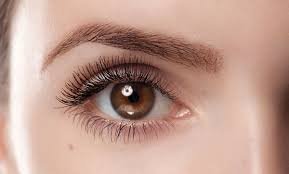Ear piercings are a popular form of body art and self-expression, but many people are unsure of when it is safe to change their piercing from one type to another. If you have recently gotten an ear piercing and are curious about when you can switch it up, this article is for you! Here, we will explore the recommended wait time before changing your ear piercing, as well as discuss which types of piercings may need more or less wait time.
Ear Piercing
When it comes to ear piercing, it is essential to understand the proper healing time before changing the jewelry. While you may be excited to switch out your earrings, rushing the process can lead to infections or complications with your piercings. Generally, earlobes take around 6-8 weeks to heal fully, while cartilage piercings can take up to 6 months.
It is crucial not to remove your initial jewelry prematurely as they play an important role in preventing infection and promoting wound healing. Before making any changes, ensure that the new jewelry is hypoallergenic and sterile. It’s best also to clean both the earring and piercing site thoroughly before inserting new earrings.
If you’re unsure about when it’s safe to change your earrings or are experiencing any discomfort or pain during or after changing them out, consult a professional piercer or medical professional for advice. They’ll be able to assess your situation and provide guidance on how best to care for your piercings moving forward.
Ear Piercing Healing Process
After getting an ear piercing, it is essential to take good care of it to prevent infections and ensure proper healing. The first few days require great attention, which involves cleaning the area with saline solution or saltwater twice a day. An ear piercing can take up to 8 weeks to fully heal, depending on various factors such as your body’s healing process and the location of the piercing.
It is not advisable to change your ear piercing until it has completely healed. Changing the jewelry too soon may cause irritation, leading to infections or scarring. Once you notice that your earlobe has healed entirely, you can consider changing the earring. However, if you experience any discomfort or pain during the healing period, consult a professional piercer for advice.
In conclusion, having an ear piercing requires patience during its healing process. It would be best if you took good care of it by following proper hygiene practices and avoiding any irritants before considering changing your earring type or design. Always ensure that your hands are clean when touching your new piercings and avoid sleeping on them when they’re still fresh so that there’s no extra pressure applied at night-time while resting/sleeping.
When Can I Change My Piercing?
After getting a new ear piercing, it can be tempting to switch out the jewelry for something more of your style. However, changing your piercing too soon can cause irritation and even prolong the healing process. The general rule of thumb is to wait at least six weeks before attempting to change your ear piercing.
During the first six weeks after getting your ear pierced, it’s important to keep the area clean and avoid any activities that may irritate or infect the area. This means avoiding swimming pools, hot tubs, and baths as well as not sleeping on the side of the newly pierced ear. After six weeks, you should see significant improvement in terms of swelling and redness around the site.
Once you’ve waited out this period and have maintained good hygiene practices, you may be able to safely change out your earrings without any issue. If you find that changing earrings cause pain or discomfort or if there is still visible inflammation around the piercing site, it’s best to wait a little longer before trying again.
Aftercare Tips For Changing A Piercing
Changing a piercing can be an exciting experience, but it’s important to remember that proper aftercare is essential to prevent infection or other complications. When it comes to ear piercings, you should wait at least six weeks before changing the jewelry. This period allows for the wound to heal and reduces the risk of irritation or discomfort.
Once you are ready to change your piercing, make sure you have clean hands and use sterilized jewelry. Avoid touching the piercing unnecessarily and ensure that the new piece of jewelry is not too tight or too loose. It’s also best to avoid wearing earrings made from materials such as nickel or copper, which can cause allergic reactions.
Remember to continue cleaning your new piercing regularly with saline solution or rubbing alcohol for several days after changing it. If there are any signs of redness, swelling, discharge or pain in the area around your ear piercing, seek medical attention immediately. With proper care and attention, your newly changed ear piercing will look great and heal well!
Possible Risks Of Changing A Piercing
Changing a piercing may seem like a simple process, but it can actually pose several risks. One of the most common risks is infection. When you remove the jewelry from your piercing, bacteria and other microorganisms can enter the wound and cause an infection. This risk is especially high if you are changing your piercing too soon or if you do not properly clean the area before inserting new jewelry.
Another risk of changing a piercing is causing damage to the surrounding tissue. If you force jewelry through a closed hole or insert a piece that is too large for your ear, it can result in tears or other injuries to the skin around your piercing. This can be painful and may require medical attention to heal properly.
Lastly, changing a piercing too often can also lead to problems with healing and scarring. Every time you remove and reinsert jewelry into your ear, you disrupt the delicate healing process that occurs after getting pierced. If this happens repeatedly, it can cause scar tissue to form around the site of your piercing, making future changes more difficult and potentially painful.
How To Remove The Starter Earrings For The First Time
Changing your starter earrings for the first time may seem daunting, but it doesn’t have to be. First things first, make sure that your piercing has fully healed before attempting to remove or change your earrings. This can take anywhere from 4-6 weeks for earlobe piercings and up to 6 months for cartilage piercings.
Once you’ve determined that your piercing is fully healed, it’s time to remove the starter earrings. Start by washing your hands thoroughly with soap and water to prevent any infection. Then gently twist the earring back and forth while pulling away from the earlobe until it comes off.
If you’re having trouble removing the earring, try applying a small amount of lubricant such as petroleum jelly or lotion around the earring post to help loosen it up. It’s important to avoid forcing or yanking out the earring as this can cause damage or irritation to your piercing site.
In summary, changing your starter earrings for the first time requires patience and caution. Always make sure that your piercing is fully healed before attempting any changes and remember to wash your hands thoroughly before handling any earrings. If you’re having difficulty removing an earring, don’t hesitate to seek help from a professional piercer or healthcare provider.
Professional VS. DIY Piercing Changes
When it comes to changing your ear piercing, you may wonder if it’s best to go to a professional or attempt the change yourself. While DIY piercing changes are possible, it’s generally recommended that you opt for professional assistance. Professional piercers have the expertise and tools needed to ensure that the process is safe and hygienic. They can also give you advice on when it’s appropriate to change your jewelry based on your healing progress.
Attempting a DIY piercing change can increase the risk of injury or infection, especially if you’re inexperienced or using improper tools. Additionally, some piercings need more time than others to heal properly before they’re ready for new jewelry. Before making any changes yourself, consult with a professional piercer or healthcare provider who can advise you on proper aftercare and timing.
Ultimately, while changing your ear piercing may seem like a simple task, it requires proper knowledge and technique. Opting for professional assistance can help minimize risks and ensure that your piercing remains healthy as it heals over time.
Conclusion
In conclusion, it is important to consider your options when it comes to changing your ear piercing. While many people are eager to switch out their jewelry as soon as possible, it is essential to wait until the piercing has fully healed before making any changes. This can take several weeks or even months depending on the location of the piercing and other factors such as individual healing time and aftercare practices.
Once you have determined that your piercing has fully healed, you may wish to consult with a professional piercer or jewelry expert for advice on which types of jewelry are best suited for your specific needs and preferences. There are a wide variety of materials and styles available, each with their own unique benefits and drawbacks.
Ultimately, the decision to change your ear piercing is a personal one that should be made based on careful consideration of all available options. By taking the time to research different jewelry types and consulting with professionals as needed, you can ensure that you make an informed choice that will keep both you and your ears happy and healthy for years to come. For further advices please visit us.






Be First to Comment